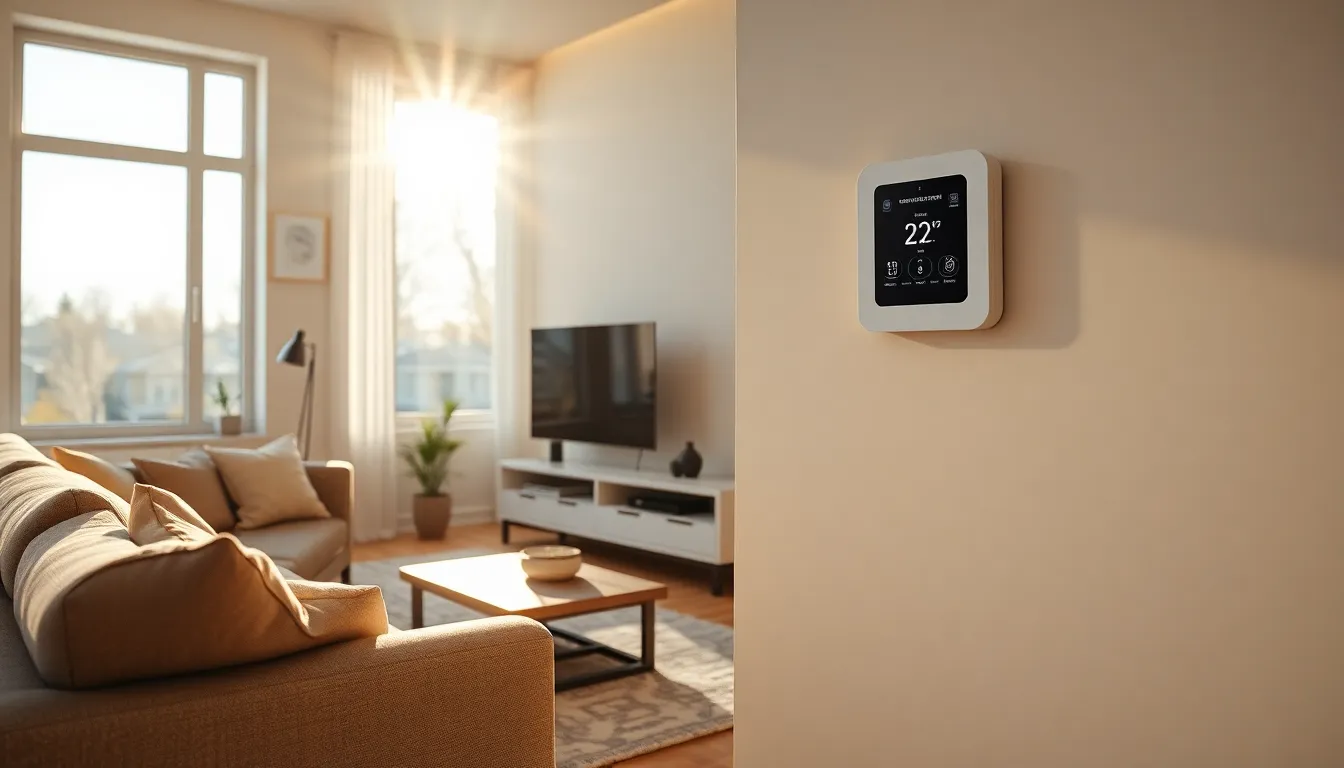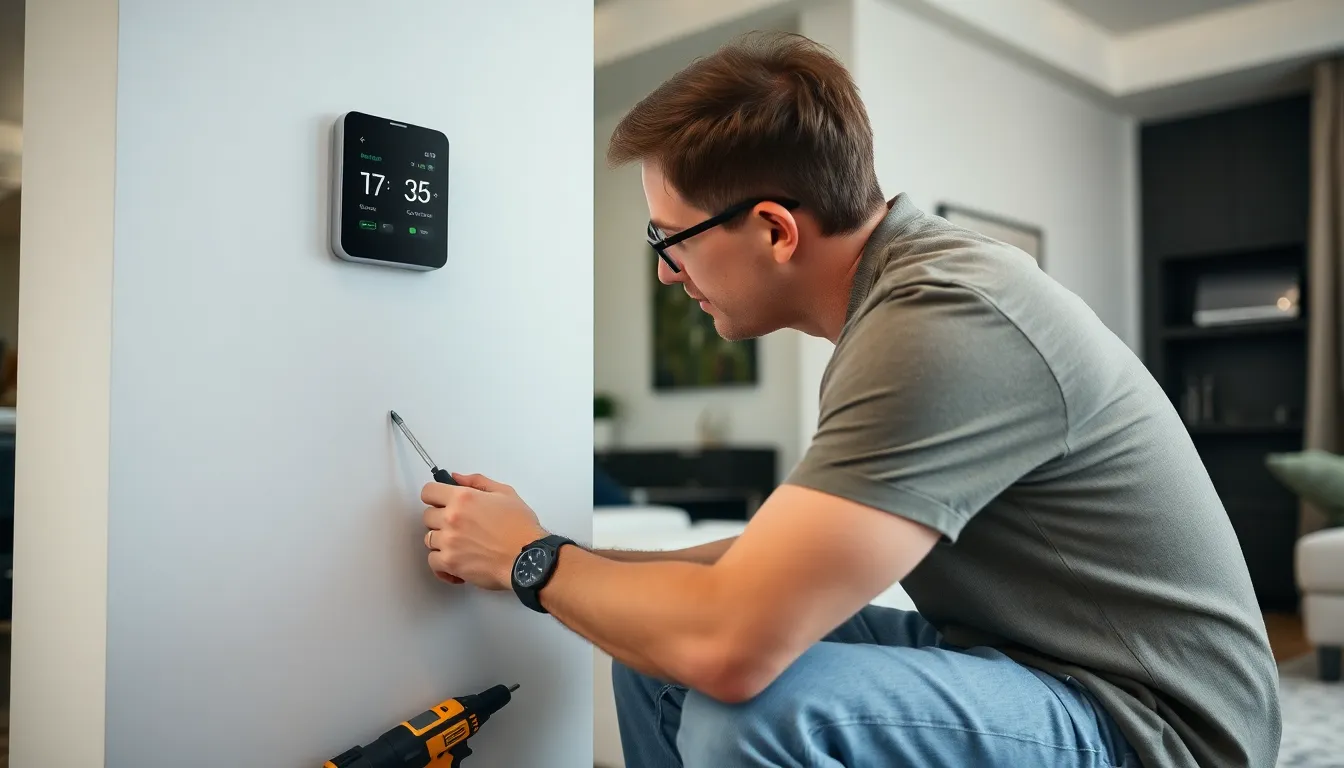Imagine walking into a perfectly cozy home after a long day, all thanks to a smart thermostat that knows your comfort better than your best friend. With the power to learn your habits and adjust temperatures accordingly, it’s like having a personal climate control guru right on your wall. Not only does it keep you comfy, but it also saves you money—because who doesn’t want to keep their hard-earned cash for more important things, like that fancy coffee machine?
Table of Contents
ToggleBenefits Of Installing A Smart Thermostat
Smart thermostats offer numerous advantages for homeowners. They optimize comfort and savings, making them a worthwhile investment.
Energy Efficiency
Enhanced energy efficiency characterizes smart thermostats. They automatically adjust based on user habits, minimizing energy waste. For instance, these devices lower temperatures when homes are vacant, reducing unnecessary heating or cooling. Smart thermostats also provide real-time usage data, allowing users to monitor energy consumption. This feature encourages more efficient habits, leading to a reduced carbon footprint.
Cost Savings
Substantial cost savings follow the installation of smart thermostats. These devices typically reduce heating and cooling expenses by 10-15% annually. Homeowners can save between $100 and $200 yearly, depending on usage patterns and local energy rates. Furthermore, many utility companies offer rebates for installing smart thermostats. Tracking and analyzing energy usage allows families to make informed decisions about their heating and cooling needs, ensuring effective management of household budgets.
Types Of Smart Thermostats

Smart thermostats come in various types, each designed to meet specific user needs. Understanding these types can help in selecting the right device for improved home comfort and energy savings.
Learning Thermostats
Learning thermostats adapt automatically based on user behaviors. These devices analyze patterns, such as when the home is occupied or vacant, then adjust temperatures accordingly. Nest Learning Thermostat exemplifies this type, learning the preferences of its users within a week. Smart adjustments enhance comfort while optimizing energy use, leading to significant savings. Users report savings of approximately 10 to 15 percent on heating and cooling costs after installation.
Programmable Thermostats
Programmable thermostats grant users control over their home’s temperature schedule. These devices allow users to set specific times for heating or cooling to suit daily routines. Common models, such as Ecobee SmartThermostat, enable customization based on user preferences. Users can program temperatures for different days or times, ensuring comfort during peak hours. Many programmable thermostats also feature remote access through mobile applications, providing convenience even when away from home. They can result in energy savings of up to 30 percent when programmed effectively.
Steps To Install A Smart Thermostat
Installing a smart thermostat involves several straightforward steps that ensure proper setup and functionality.
Gather Necessary Tools
Start by collecting the essential tools for installation. You’ll need a screwdriver, drill, level, and wire stripper. A multimeter helps check electrical connections. Use a smartphone or tablet for configuring the device. Having all tools ready streamlines the process and minimizes interruptions during installation.
Turn Off Power To The System
Safety comes first, so turn off the power to the HVAC system at the circuit breaker. This action prevents electrical shock during the installation. Verify power is off by checking the old thermostat’s display. This simple step protects both the installer and the new device from damage.
Remove The Old Thermostat
Carefully detach the old thermostat from the wall. Start by unscrewing the mounting plate and gently pulling it from the wall. Document the wire connections by taking pictures. Label each wire according to its terminals for easy identification later. This meticulous approach ensures a seamless transition to the new thermostat.
Connect The New Thermostat
Connect the new smart thermostat according to the labeled wires. Match each wire to its corresponding terminal as documented earlier. Secure the thermostat’s mounting plate to the wall, then attach the device. Afterward, restore power at the circuit breaker. Initializing the new thermostat completes the installation process, enabling users to configure settings.
Troubleshooting Common Installation Issues
Smart thermostat installations may encounter issues. Common challenges include wiring problems and calibration errors.
Wiring Problems
Wiring issues often arise during installation. Confusion with color codes for thermostat wires can lead to incorrect connections. To address this, users should document the connections before disconnecting the old thermostat. Checking the compatibility between the thermostat and the existing HVAC system reduces issues. Faulty or damaged wires might cause the thermostat to malfunction. In such cases, inspecting and repairing wires helps ensure proper functionality.
Calibration Errors
Calibration errors can affect the thermostat’s accuracy. Incorrect temperature readings lead to discomfort and inefficiencies. Users should follow the manufacturer’s guidelines for calibrating the device after installation. Frequent adjustments may indicate a need for calibration checks. Testing the thermostat’s readings against a reliable thermometer can identify discrepancies. If inaccuracies persist, users may need to reset the device or consult customer support for assistance.
Installing a smart thermostat is a smart move for any homeowner looking to enhance comfort and save on energy costs. With their ability to learn habits and adjust temperatures accordingly these devices make it easier to maintain an efficient home environment. The potential savings on heating and cooling bills combined with utility rebates make this investment even more appealing.
The installation process is straightforward and manageable for most users. Following the provided steps ensures a successful setup while addressing common issues can help maintain optimal performance. Embracing this technology not only promotes a more comfortable living space but also contributes to a greener planet by reducing energy waste.





